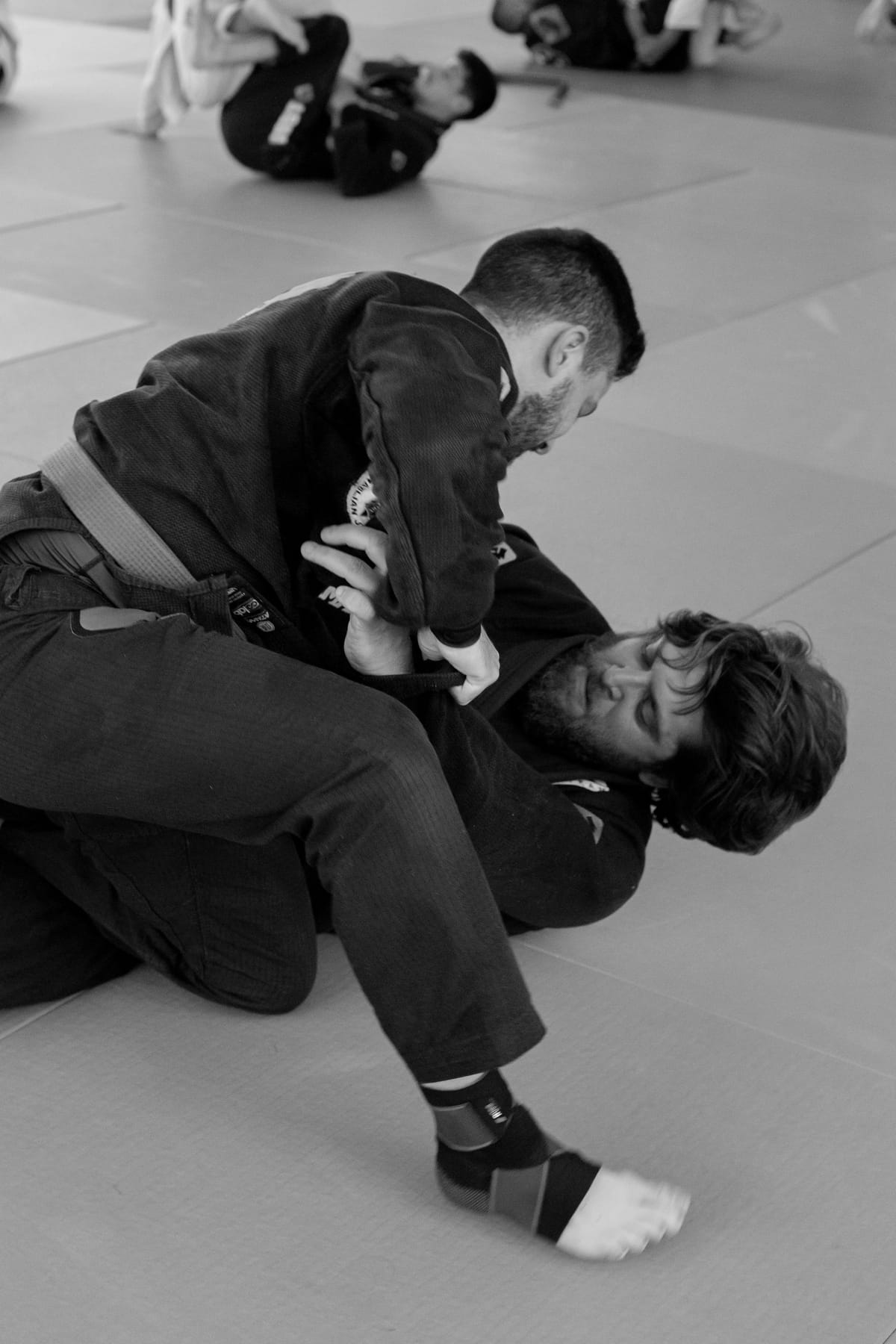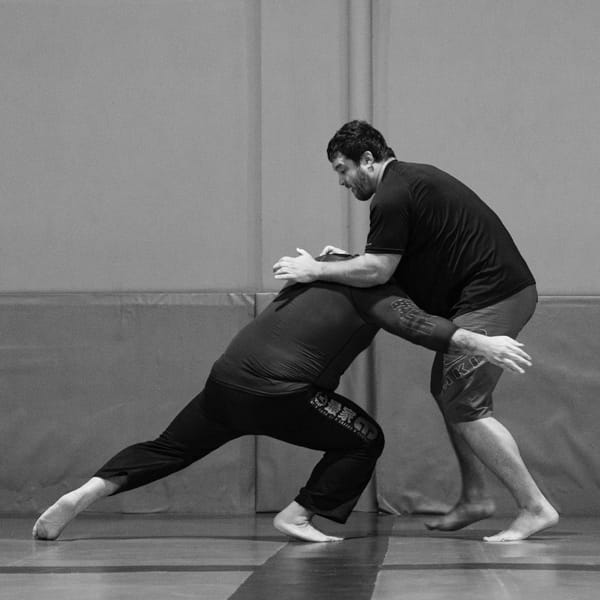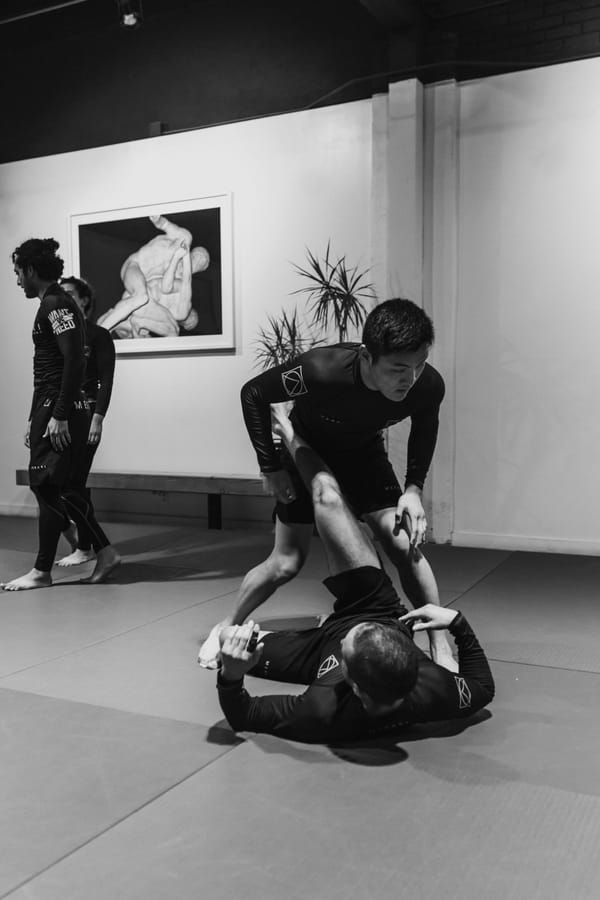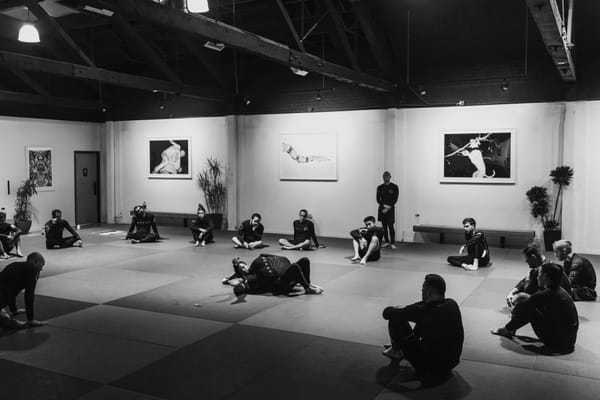Open Guard Games

This is week 3 of using ecological methods for my new academy in Fiji, basically since the new year. The academy started in December 2024. We currently have around 5 monthly students and a few irregulars, so on any given night we are 3-5 people training. There are 2 white belts with previous experience and a purple belt. Everyone else is completely new to grappling. An oddly healthy balance of male to female, around 50/50. The lessons in December didn't use any ecological methods, I was sticking to self defence and very basic technique demonstrations, mount, side control, this is a guard, this is an arm bar submission.
The Games
I was struggling to find examples of games I can run that would benefit new students. I made the mistake of watching this video from Standard Jiu-Jitsu (Greg Sauders' academy):
When I watched this, I had not started reading the theory behind the ecological approach, so some of the language was difficult for me to follow. The games are also way too complex for the level of my students.
Luckily I recently found this older (and more watched) video from a foundations class:
Now that I've been trying to come up with my own games, and that I've read some theoretical material behind ecological training, this video was really informative. Definitely watch the whole thing if you want an idea of games to run for open guard. Greg uses a lot of unique terminology, which I am undecided on. I can see how it can be off putting to people with prior grappling experience. He uses the term 'belly up guard'. Belly up guard is descriptive, and now that I think about it, we (the community) don't have a name for open guard where we're on our backs, only seated open guard (or butterfly guard). For now I will stick with calling it seated open guard or open guard on your back.
The games he shows here are a great follow on for the games I came up with last week. The first game requires the guard player to 'make connections' with their partner with their hands and feet, using hooks and posts, and focusing on making those connections on the inside position. The top player needs to use their hands and movement to stop the bottom player from making connection with their feet, and to move past the feet and knee line of the opponent.
Watching the students playing the games, I am really impressed by how the students are moving just by focusing on the tasks set in the game. They look like they are more experienced than they are (Greg says only 2 of the students have more than 1 year of experience). One of the questions I often ask students below purple belt when I see them sparring is, 'why isn't your left/right hand/foot on your opponent?' I see it time and time again. They have learnt the DLR guard and a sweep. They set up the DLR, their opponent takes the non DLR hook leg off the hip, pushes it to the floor, steps over it and starts passing, and the guard player, having had their guard disrupted, forgets about that foot and leg and starts framing with their arms. In this video, even the most inexperienced students, are trying at all times to get and keep both feet connected to their opponent. The fundamental concept that Greg is teaching here is making and maintaining connection with your opponent. I don't know how ecological methodology would teach something like the DLR yet, or if it even would, but it would be great to know that if I did show a DLR sweep to a student, they already have, as a fundamental concept, the idea that if the top player removes either of their feet, they need to re-establish connection as a priority.
The Class
I have now run two classes using the open guard games described by Greg in the foundations class video. My immediate feelings were ones of disappointment. I felt hollow describing the games, like I wasn't giving anything of value to my students that had paid money to learn from me. I was telling them to play an abstract game about putting their feet on someone's body and trying to 'destabilise' them. When they started the games, a lot of people, especially the new students, looked confused and hesitant, they didn't really do much and I had to go around and encourage them, prompting them with suggestions like 'use your hands to prevent them connecting their feet to you' (which was also mentioned in the game description), and 'use your feet to bring yourself closer to your opponent so it's harder for them to break connection'.
However, after the class, when I had time to reflect, I came to a couple of conclusions.
- I feel more secure demonstrating a specific technique, like a guard pass or sweep, because that was how I was taught, it is the specialised knowledge I have and that makes me feel safe. Note that this is about me and my feelings, not about my students, or what is or isn't good for them.
- When I do demonstrate these safe techniques that make me feel good. The students still look confused and hesitant at the start of drilling, or worse, confidently drill the technique incorrectly. With a knee cut pass, I will break the process into 4 distinct and (to my mind) obvious steps. (Step 0 start in headquarters position).
- Obtain an underhook.
- Draw your knee across the belt line and put it on the mat next to their hip.
- Cross face with your other arm, connecting the hands.
- Knee slides down and away from the opponent, hip pushes through to clear the foot.
These steps will differ from another instructor, and I can see by writing them down, how much jargon there is, 'underhook, 'cross face', but at least they are accompanied by visual demonstrations. 3-2-1 👏. Students hesitantly trying to remember step one, or remembering step one, but underhooking the wrong side as they start drawing the knee cut. In any methodology, students will be confused and hesitant at first.
In one of the classes I did mix up the methodologies. I started with the two games, allowing the top player to try to pass while the bottom player tried to destabilise in the second game. After these games I showed the knee cut pass and asked the students to drill it in the traditional way. In the second class I taught this week, I stuck to only games. I guess one of these days I should ask the students what their views are on it, if they prefer to drill or to play games. Which one makes them feel they are learning more? Which one makes them want to come to class more? The latter question is the more important one in my opinion.
Thanks for reading. Until next time, enjoy playing.


